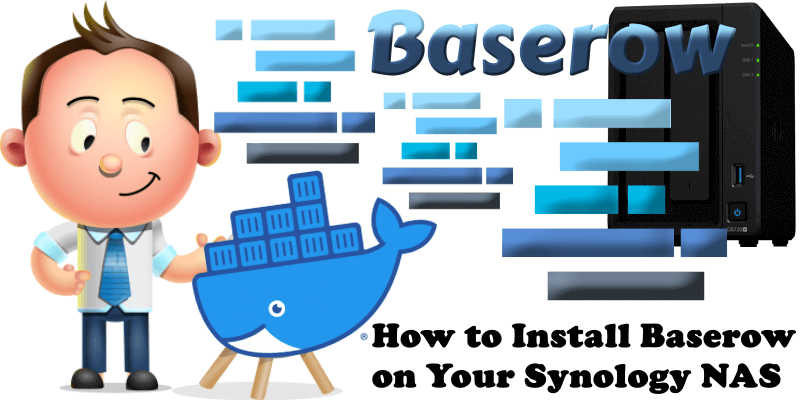
Baserow is an Airtable alternative. With Baserow you can create your own online database without any technical experience. The user friendly no-code tool gives you the powers of a developer without leaving your browser. In this step by step guide I will show you how to install Baserow on your Synology NAS using Docker.
This guide works perfectly with the latest Baserow v2.0.1 release.
STEP 1
Please Support My work by Making a Donation.
STEP 2
Install Portainer using my step by step guide. If you already have Portainer installed on your Synology NAS, skip this STEP. Attention: Make sure you have installed the latest Portainer version.
STEP 3
Make sure you have a synology.me Wildcard Certificate. Follow my guide to get a Wildcard Certificate. If you already have a synology.me Wildcard certificate, skip this STEP.
STEP 4
Go to Control Panel / Login Portal / Advanced Tab / click Reverse Proxy. Follow the instructions in the image below.
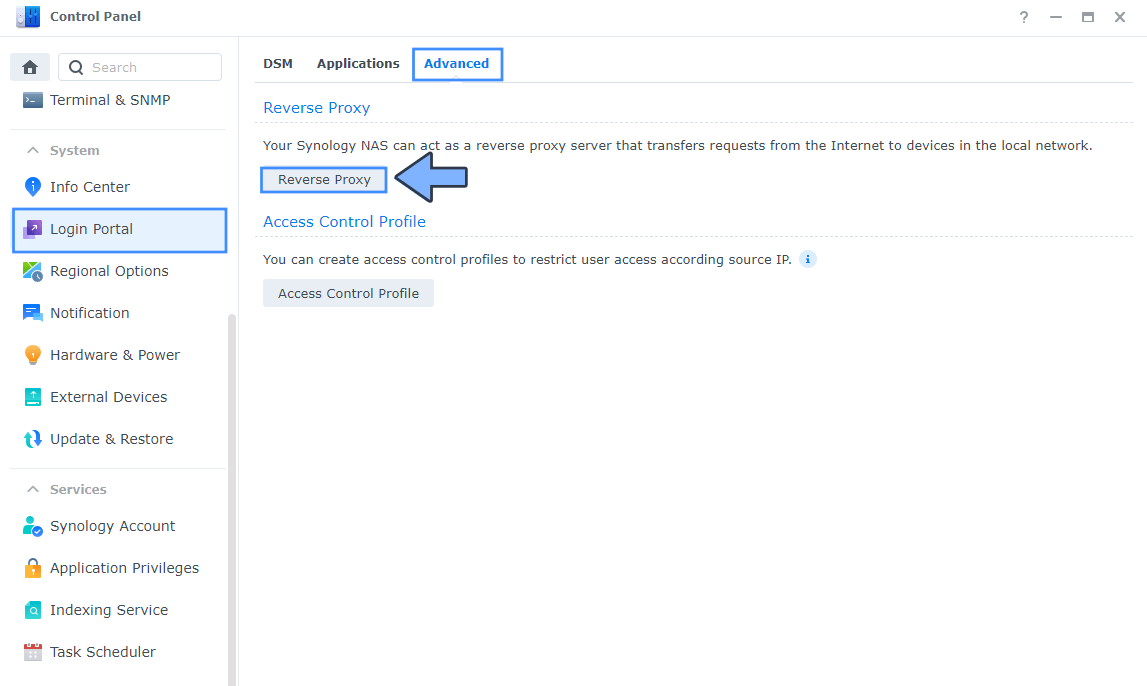
STEP 5
Now click the “Create” button. Follow the instructions in the image below.
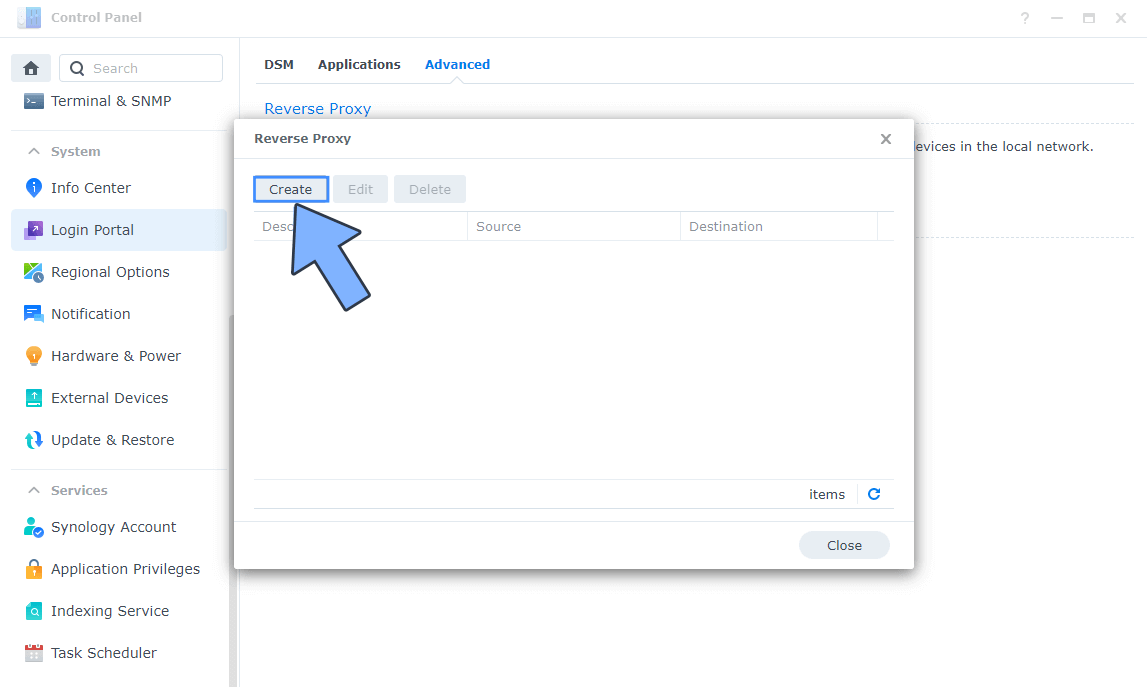
STEP 6
After you click the Create button, the window below will open. Follow the instructions in the image below.
On the General area, set the Reverse Proxy Name description: type in Baserow. After that, add the following instructions:
Source:
Protocol: HTTPS
Hostname: baserow.yourname.synology.me
Port: 443
Check Enable HSTS
Destination:
Protocol: HTTP
Hostname: localhost
Port: 3888
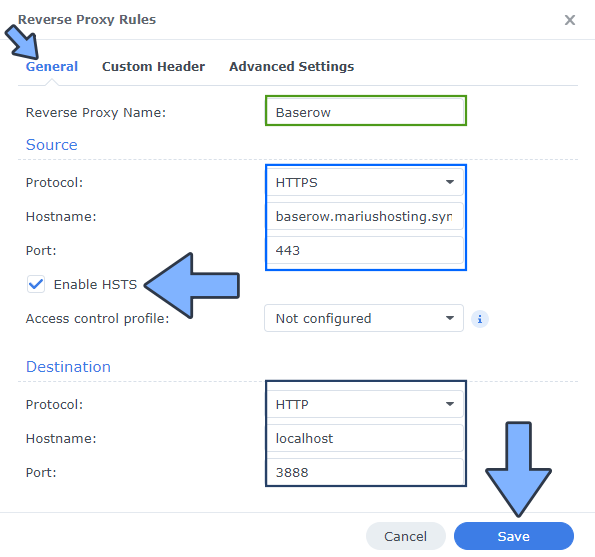
STEP 7
On the Reverse Proxy Rules click the Custom Header tab. Click Create and then, from the drop-down menu, click WebSocket. After you click on WebSocket, two Header Names and two Values will be automatically added. Click Save. Follow the instructions in the image below.

STEP 8
Go to Control Panel / Network / Connectivity tab/ Check Enable HTTP/2 then click Apply. Follow the instructions in the image below.
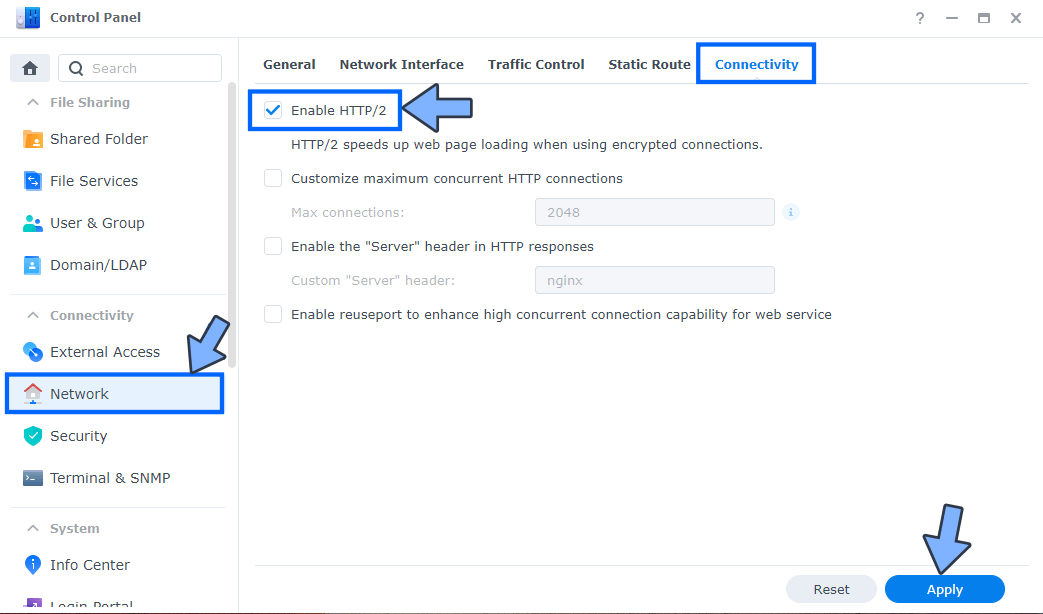
STEP 9
Go to Control Panel / Security / Advanced tab/ Check Enable HTTP Compression then click Apply. Follow the instructions in the image below.
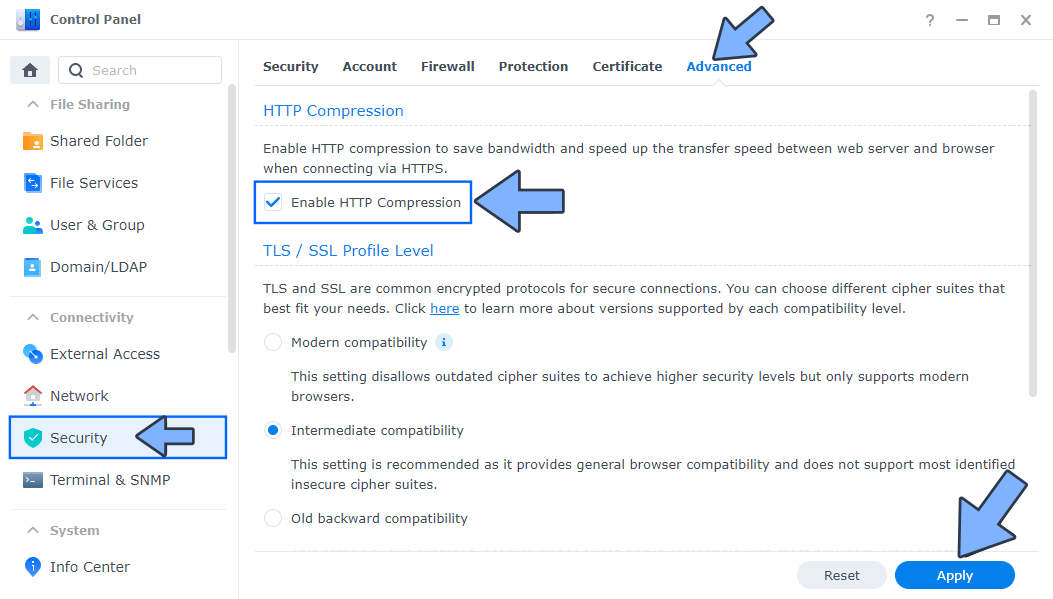
STEP 10
Go to File Station and open the docker folder. Inside the docker folder, create one new folder and name it baserow. Follow the instructions in the image below.
Note: Be careful to enter only lowercase, not uppercase letters.
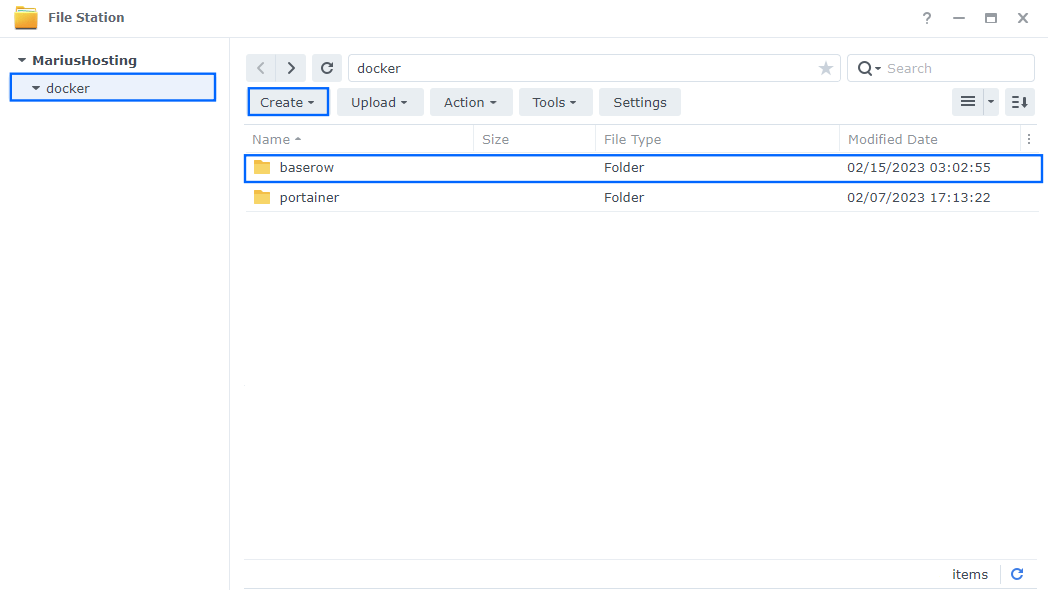
STEP 11
Now create three new folders inside the baserow folder that you created at STEP 10 and name them data, db, redis. Follow the instructions in the image below.
Note: Be careful to enter only lowercase, not uppercase letters.
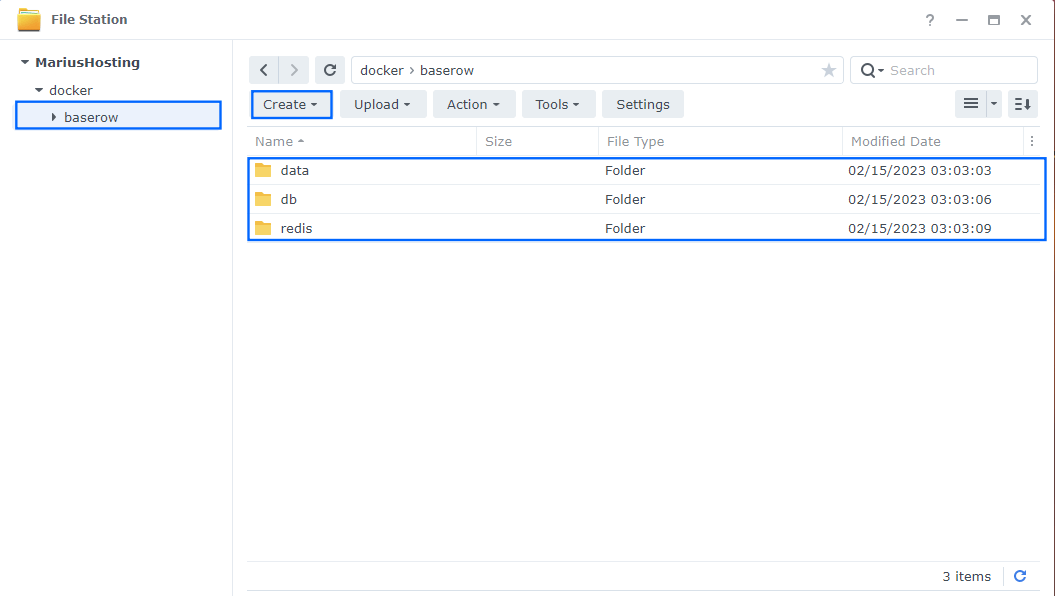
STEP 12
Follow my step by step guide on how to activate SMTP for your Gmail account. This step is mandatory. Note: If you don’t want to use the easiest way for SMTP with Google and you already have SMTP details from your own Mail Server, you can just skip this STEP and use your personalized email SMTP details instead.
STEP 13
Log into Portainer using your username and password. On the left sidebar in Portainer, click on Home then Live connect. Follow the instructions in the image below.

On the left sidebar in Portainer, click on Stacks then + Add stack. Follow the instructions in the image below.

STEP 14
In the Name field type in baserow. Follow the instructions in the image below.
services:
redis:
image: redis:7
command:
- /bin/sh
- -c
- redis-server --requirepass redispass
container_name: Baserow-REDIS
hostname: baserow-redis
security_opt:
- no-new-privileges:true
user: 1026:100
healthcheck:
test: ["CMD-SHELL", "redis-cli ping || exit 1"]
volumes:
- /volume1/docker/baserow/redis:/data:rw
environment:
TZ: Europe/Bucharest
restart: on-failure:5
db:
image: postgres:18
container_name: Baserow-DB
hostname: baserow-db
security_opt:
- no-new-privileges:true
healthcheck:
test: ["CMD", "pg_isready", "-q", "-d", "baserow", "-U", "baserowuser"]
timeout: 45s
interval: 10s
retries: 10
volumes:
- /volume1/docker/baserow/db:/var/lib/postgresql:rw
environment:
POSTGRES_DB: baserow
POSTGRES_USER: baserowuser
POSTGRES_PASSWORD: baserowpass
restart: on-failure:5
baserow:
image: baserow/baserow:latest
container_name: Baserow
hostname: baserow
security_opt:
- no-new-privileges:true
ports:
- 3888:80
volumes:
- /volume1/docker/baserow/data:/baserow/data:rw
environment:
BASEROW_PUBLIC_URL: https://baserow.yourname.synology.me
BASEROW_MAX_IMPORT_FILE_SIZE_MB: 1024
BASEROW_TRIGGER_SYNC_TEMPLATES_AFTER_MIGRATION: false
DATABASE_USER: baserowuser
DATABASE_PASSWORD: baserowpass
DATABASE_NAME: baserow
DATABASE_HOST: baserow-db
DATABASE_PORT: 5432
REDIS_HOST: baserow-redis
REDIS_PORT: 6379
REDIS_PROTOCOL: redis
REDIS_USER: default
REDIS_PASSWORD: redispass
EMAIL_SMTP: Your-own-gmail-address
EMAIL_SMTP_HOST: smtp.gmail.com
EMAIL_SMTP_PORT: 587
EMAIL_SMTP_USER: Your-own-gmail-address
EMAIL_SMTP_PASSWORD: Your-own-app-password
EMAIL_SMTP_USE_TLS: true
FROM_EMAIL: Your-own-gmail-address
restart: on-failure:5
depends_on:
redis:
condition: service_healthy
db:
condition: service_healthy
Note: Before you paste the code above in the Web editor area below, change the value numbers for user with your own UID and GID values. (Follow my step by step guide on how to do this.) 1026 is my personal UID value and 100 is my personal GID value. You have to type in your own values.
Note: Before you paste the code above in the Web editor area below, change the value for TZ. (Select your current Time Zone from this list.)
Note: Before you paste the code above in the Web editor area below, change the value for BASEROW_PUBLIC_URL and type in your own synology.me DDNS with https:// at the beginning that you have previously created at STEP 6.
Note: Before you paste the code above in the Web editor area below, change the value for EMAIL_SMTP and type in your own Gmail address. Refer to STEP 12.
Note: Before you paste the code above in the Web editor area below, change the value for EMAIL_SMTP_USER and type in your own Gmail address. Refer to STEP 12.
Note: Before you paste the code above in the Web editor area below, change the value for EMAIL_SMTP_PASSWORD and type in your own Gmail app password. Refer to STEP 12.
Note: Before you paste the code above in the Web editor area below, change the value for FROM_EMAIL and type in your own Gmail address. Refer to STEP 12.
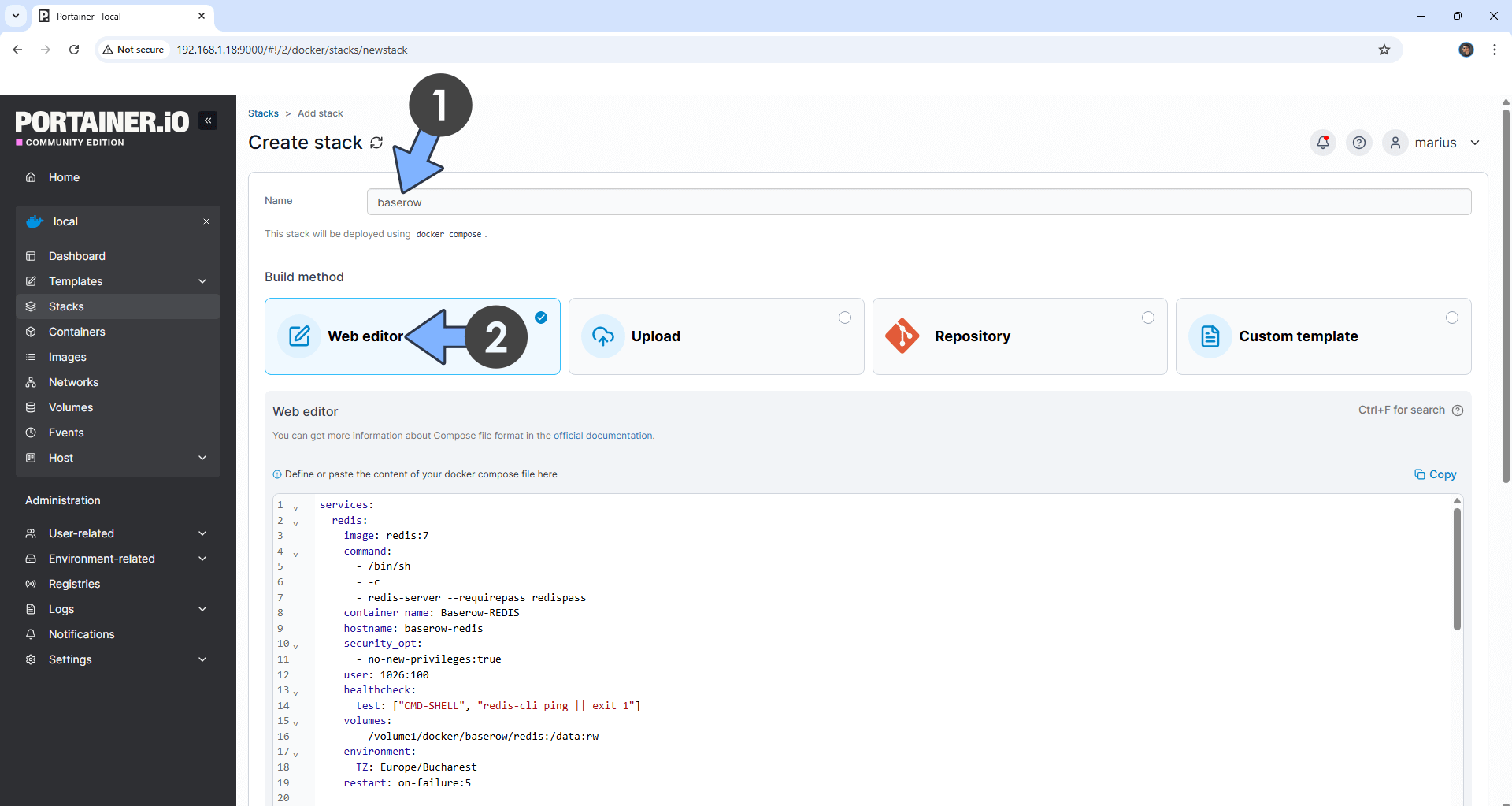
STEP 15
Scroll down on the page until you see a button named Deploy the stack. Click on it. Follow the instructions in the image below. The installation process can take up to a few minutes. It will depend on your Internet speed connection.
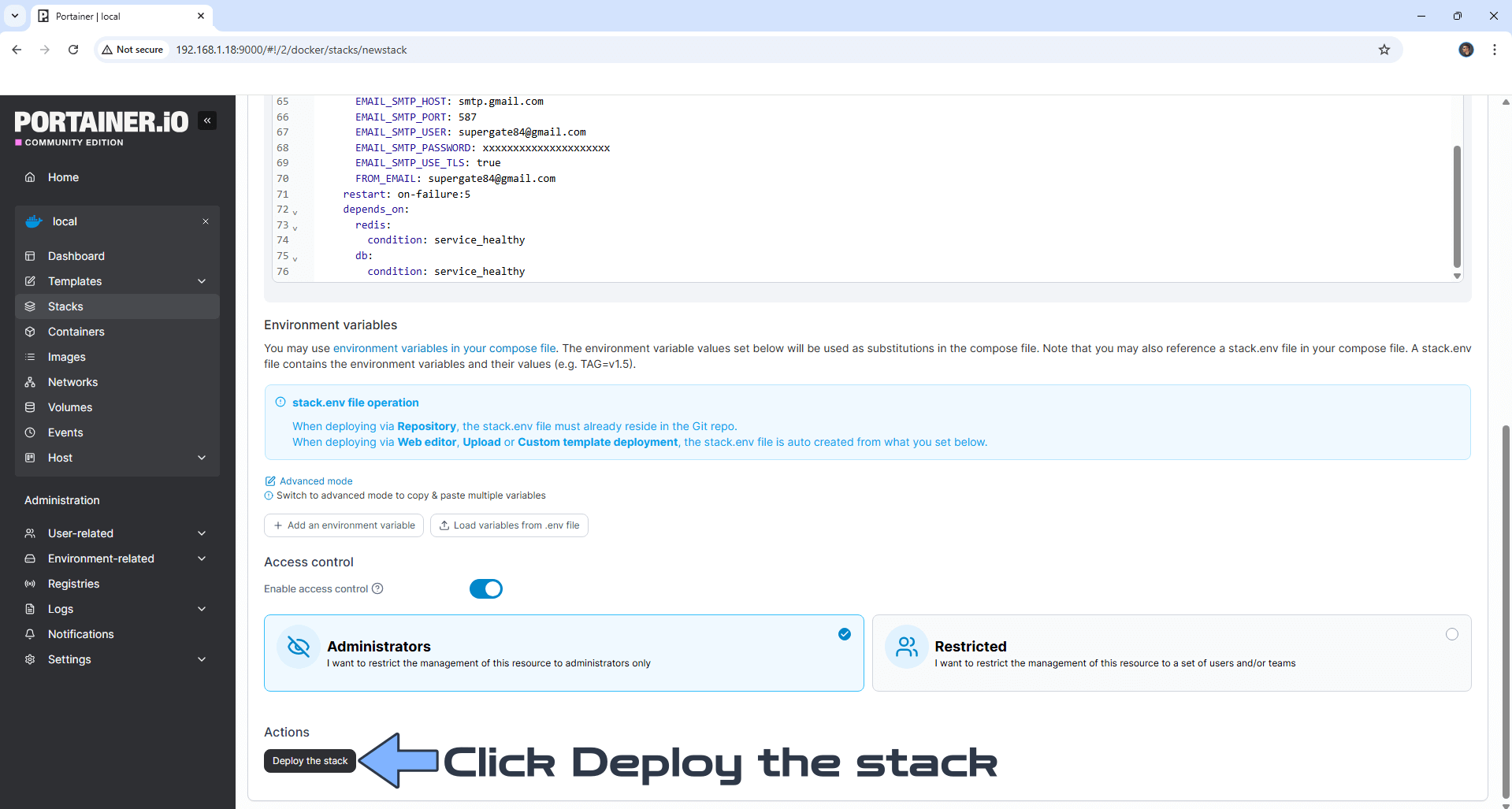
STEP 16
If everything goes right, you will see the following message at the top right of your screen: “Success Stack successfully deployed“.

STEP 17
🟢Please Support My work by Making a Donation. Almost 99,9% of the people that install something using my guides forget to support my work, or just ignore STEP 1. I’ve been very honest about this aspect of my work since the beginning: I don’t run any ADS, I don’t require subscriptions, paid or otherwise, I don’t collect IPs, emails, and I don’t have any referral links from Amazon or other merchants. I also don’t have any POP-UPs or COOKIES. I have repeatedly been told over the years how much I have contributed to the community. It’s something I love doing and have been honest about my passion since the beginning. But I also Need The Community to Support me Back to be able to continue doing this work.
STEP 18
Please wait approximately 10 minutes or you will get a blank synology error page if you try to connect too soon. Now open your browser and type in https://baserow.yourname.synology.me In my case https://baserow.mariushosting.synology.me If everything goes right, you will see the Baserow Sign up page. Add your own credentials Email, Name and Password, then click the Sign up button. Follow the instructions in the image below.
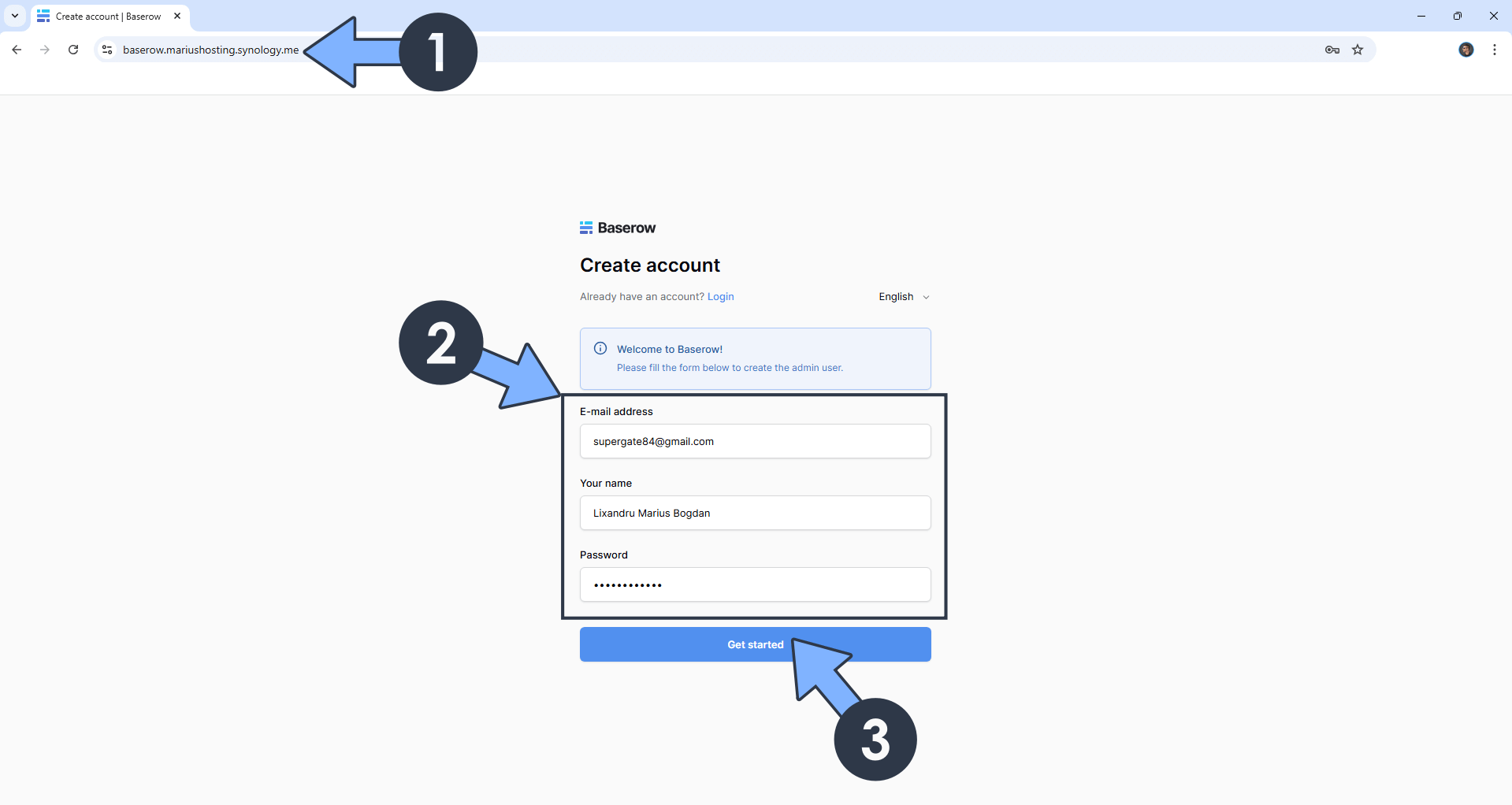
STEP 19
Create your first Workspace. You will be asked for certain information.
STEP 20
Your Baserow dashboard at a glance!
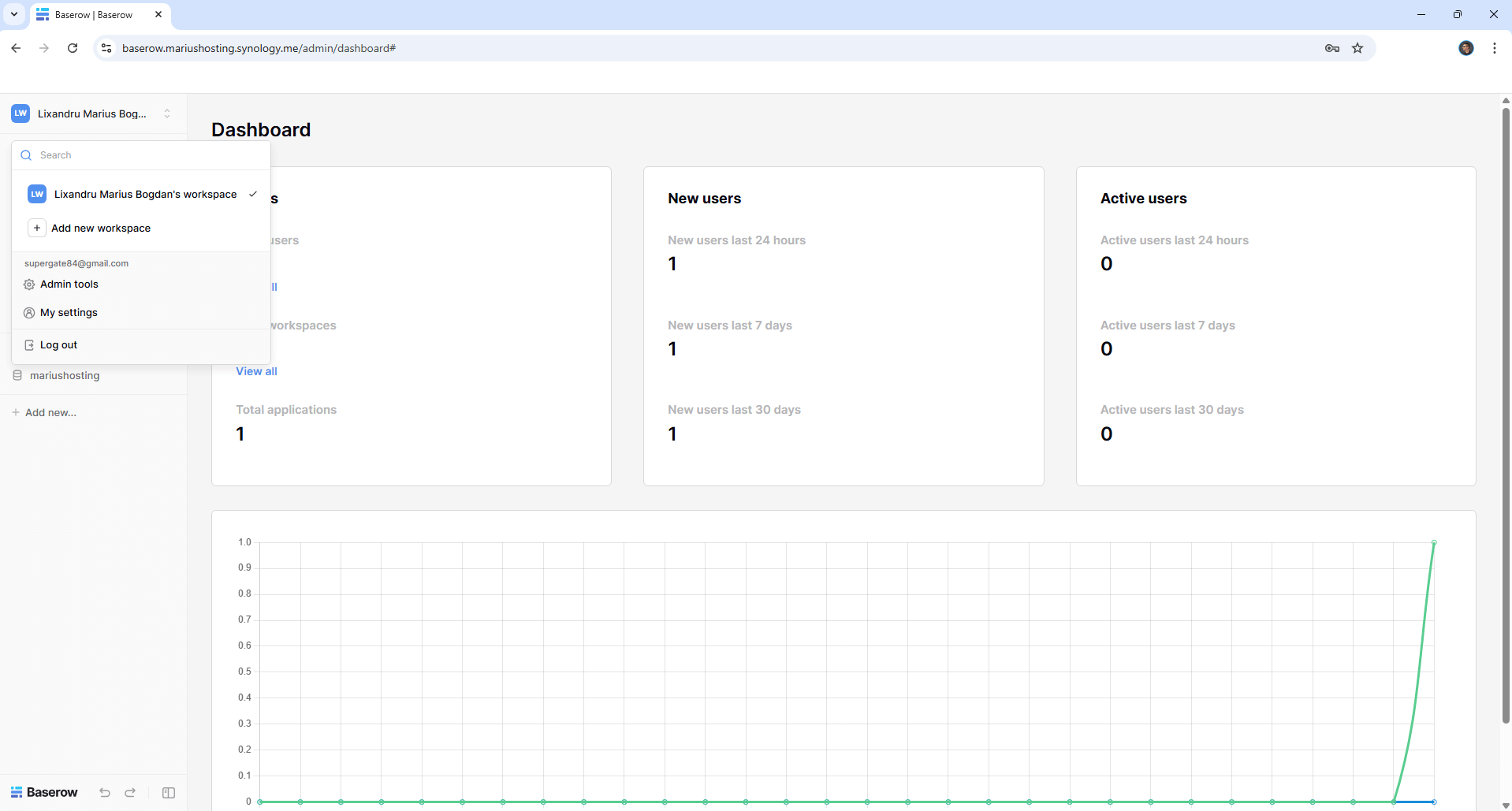
Enjoy Baserow!
If you encounter issues by using this container, make sure to check out the Common Docker issues article.
Note: Can I run Docker on my Synology NAS? See the supported models.
Note: How to Back Up Docker Containers on your Synology NAS.
Note: Find out how to update the Baserow container with the latest image.
Note: How to Free Disk Space on Your NAS if You Run Docker.
Note: You can also use your own domain name, but in this case there are some additional STEPS needed, so it’s better to contact me.
Note: How to Schedule Start & Stop For Docker Containers.
Note: How to Activate Email Notifications.
Note: How to Add Access Control Profile on Your NAS.
Note: How to Change Docker Containers Restart Policy.
Note: How to Use Docker Containers With VPN.
Note: Convert Docker Run Into Docker Compose.
Note: How to Clean Docker.
Note: How to Clean Docker Automatically.
Note: Best Practices When Using Docker and DDNS.
Note: Some Docker Containers Need WebSocket.
Note: Find out the Best NAS Models For Docker.
Note: Activate Gmail SMTP For Docker Containers.
This post was updated on Sunday / November 23rd, 2025 at 3:56 PM
